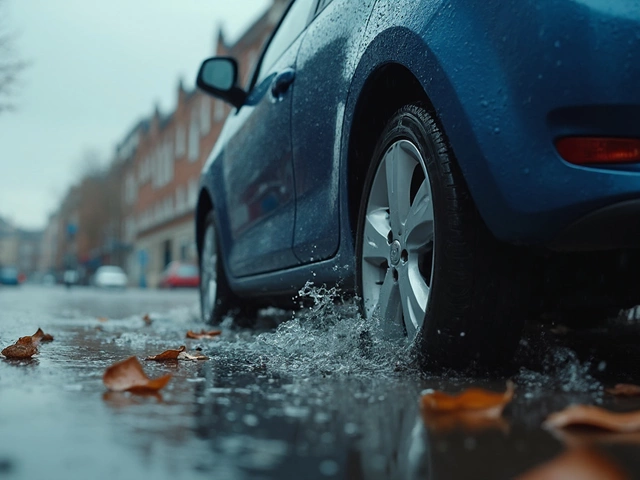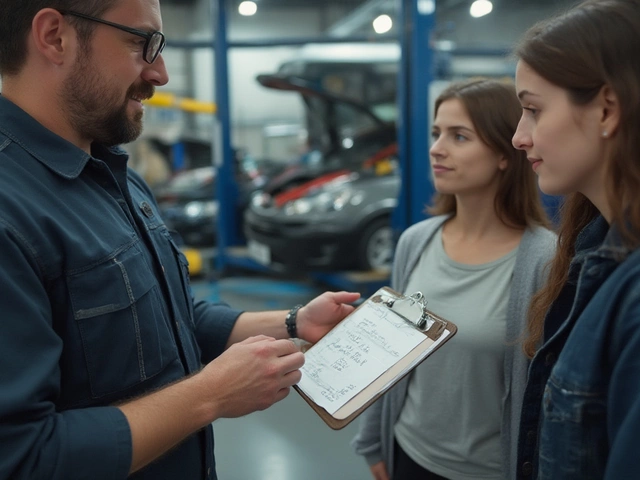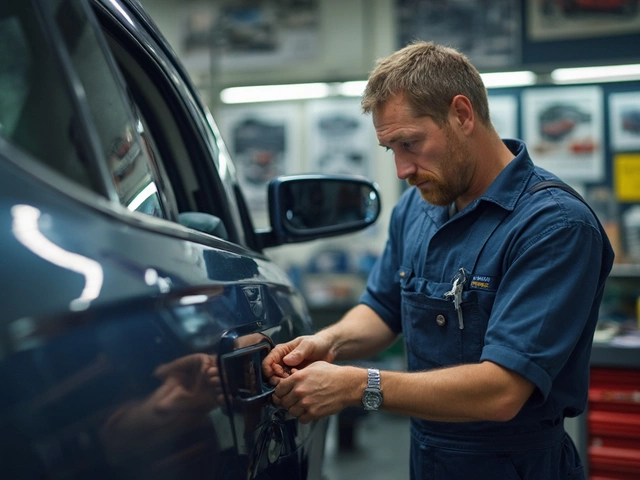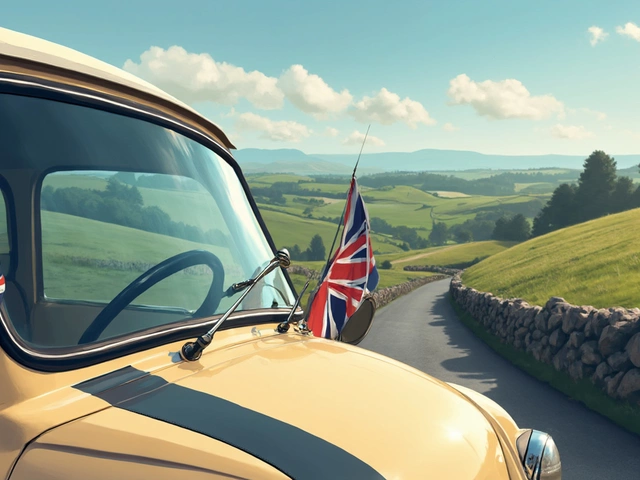Ever switched on your wipers during a storm and ended up with smears and streaks that turn your windshield into a Monet painting? The material your wipers are made from can make all the difference between clear vision and fighting to see the road. Car owners everywhere talk up silicone wipers as a game-changer, but are they really the upgrade they’re cracked up to be when it comes to lasting power? What’s the real scoop on their lifespan, especially compared to the standard rubber blades clogging up shelves at every auto shop? Let’s cut through the myths, get specific, and find out how many rainy seasons you can truly count on from silicone wiper blades in everyday driving.
How Long Do Silicone Wiper Blades Really Last?
Here’s the million-dollar question: do silicone wipers actually last twice as long as regular rubber ones, or is that just marketing bluster? Lots of drivers hear big promises—"up to two years!" or "outlasts rubber threefold!"—but brands aren’t always clear on what it takes to reach those numbers. So let’s talk hard facts instead of hype.
Standard rubber wiper blades are notorious for wearing out every 6 to 12 months—sometimes sooner if you park outside all year, live where the sun’s relentless, or drive through salt and grit. Rubber dries up, cracks, and struggles with heat or freezing temps. According to a 2023 AAA study, rubber blades lost up to 40% of their effectiveness within just six months because ozone and UV caused them to get stiff and brittle.
Silicone wiper blades, though, tell a different story. Because silicone is fundamentally more resistant to UV, ozone, and temperature swings, these blades often last between 18 months and 24 months in real-world use. Some top-tier brands like PIAA and Bosch even claim you can get three full years if you treat them right (yep, no scraping icy windshields or letting them bake on dry glass all summer). I’ve met drivers in Arizona who’ve clocked just over two years before noticing streaks, and others in rainy climates who reported a good 20 months before performance nosedived.
But let’s not gloss over this: "Up to two years" assumes you’re not abusing your wipers. If your windshield is always spotless, you don’t see wild temperature jumps, and your wipers only work against water—not frost, bugs, or mud—you’re squarely in the "max lifespan" camp. Dragging silicone wipers across caked ice or dust will shave months off, just like with rubber. Here’s a snapshot comparing the two in a simple table:
| Wiper Blade | Average Lifespan | Strong Points | Weaknesses |
|---|---|---|---|
| Silicone | 18-24 months | UV & Weather Resistant, Quiet, Smoother Wipe | Costlier, Sensitive to Dirt/Ice |
| Rubber | 6-12 months | Cheap, Easy to Find, Good Initial Performance | Fast Wear, UV Damage, Noisy with Age |
Silicone’s resistance to sunlight and air pollution is why it stands out. Drivers with garage-kept cars or who clean windshields regularly tend to get the most out of that 18-24 month promise. But if you live where wipers scrape off snow or you skip regular cleanings, you might not hit those top numbers.
What Affects Silicone Wiper Lifespan and Performance?
It’s easy to assume a pricier wiper means you can forget about them for years, but that’s not how things really work out. There’s a bit of science and a lot of scenery in play. Let’s start with the stuff silicone eats for breakfast: sunlight, ozone, and heat. Unlike rubber, silicone doesn’t react badly to ozone or UV, so it won’t crack from sitting in sun-baked parking lots all summer. That’s why desert and tropical drivers swear by them. But there’s a catch—grit and road debris aren’t any kinder to silicone than rubber. If particles get dragged under the blade, they can nick or tear even the toughest wiper, so people who live down dirt roads or park under messy trees might still see mediocre lifespans.
Winter brings another factor: ice. Silicone blades handle cold temperatures without stiffening up and getting noisy, which is a huge bonus compared to the classic rubber ‘squeak.’ But scraping frozen glass with your wipers, no matter the material, is a recipe for worn-out edges and quick failure. Keeping your windshield as clean as possible is a game-changer if you want those wipers to go the distance.
Then there’s the other wildcard—the washer fluid you use. Silicone wipers pair best with alcohol-based, ammonia-free fluids. Harsh chemicals, or using “cheap blue stuff” that leaves residue, can reduce their ability to glide smoothly and lead to sticky spots. Some high-end silicone blades actually lay down a thin, water-repellent layer on the glass, helping water bead up and slide off. If you use the wrong cleaner, you lose that bonus. Checking your washer fluid label is one of those little tricks that can stretch out your blades’ life by months.
Installation also matters. If your wipers are floppy or not snapped in just right, or if the arm tension is off, you’ll get uneven wear and have to replace blades way sooner. That’s doubly true with some “hybrid” or “beam” style silicone wipers; install them wrong and it’s streak city from week one. Whenever you swap blades, give them a gentle hand-wipe with a clean microfiber and make sure the contact is full-length and even on the glass. Spots that don’t touch evenly are the first to fray.
Finally, weather is everything. Folks in areas with brutal sun or lots of acid rain might see lifespans on the low end, while drivers in milder, cleaner climates get those famous two years (or even a bit more) out of their *silicone wipers* before things go downhill. Sometimes it’s not even about the blade—it’s about whether your windshield itself is rough with pitting or sandblasting. That chews up any blade faster.
Tips To Get The Longest Life From Your Silicone Wipers
So, if you’re shelling out for silicone, you clearly want your money’s worth. The good news is you can easily tweak your habits to squeeze every extra month out of your wipers—no mechanical skills required. Here’s what consistent wiper users swear by after years on the road:
- Clean the windshield and wipers regularly. If you drive under trees or in dusty areas, use a soft cloth to wipe down both blade and glass every week.
- Avoid using wipers on a dry windshield. Wait until it rains or spray with washer fluid. Dry wiping builds friction, which erodes even silicone edges.
- Don’t scrape frost or ice off with your wipers. Use an ice scraper by hand. Every frosty morning you resist the urge extends your blade’s life.
- Park in the shade, garage, or use a windshield shade if possible. While silicone beats rubber under UV, parking out of direct sun keeps all wipers (and your dash) younger.
- Replace washer fluid with a high-quality, ammonia-free type. This keeps both the wiper and the glass free from damaging residues.
- Inspect wiper arms for rust or tension loss. If pressure is uneven across the windshield, even indestructible silicone can’t save your visibility.
- Consider buying wipers with a water-repellent effect. Some silicone blades (like Silblade or PIAA) coat glass each time you use them, which helps shed water and reduces the time wipers have to work.
One more trick: if you notice uneven streaking, try flipping the blade’s direction (if your wiper design allows). Sometimes giving the edge a new contact angle will get a few more months out of a blade before you shell out for a new set.
And here’s a cool fact—drivers who replace their wipers at the first sign of smearing typically avoid scratched windshields altogether. Ignoring bad wipers for months, on the other hand, can cost you much more than a fresh set—once those blades start skipping or leaving rubber crumbs, the next stop is glass repair. Even with silicone, don’t stretch things past the safety line.
Money-wise, silicone blades cost about 2 to 3 times as much as basic rubber ones up front. The payoff comes when you do a simple calculation: buying one set of silicone blades every 24 months usually costs less than buying two or three sets of rubber in that same period, not to mention all the wasted time swapping blades and fighting with cloudy windshields. For a lot of drivers, the upgrade means fewer headaches later and better visibility now—which, let’s face it, might be the most valuable thing when that rain really starts pouring.
So if you’re after blades that stand up to wild weather, scorching summers, and long commutes, silicone’s your best bet. With just a few good habits, you’ll enjoy streak-free vision way longer than your neighbor still stuck in the rubber age.






